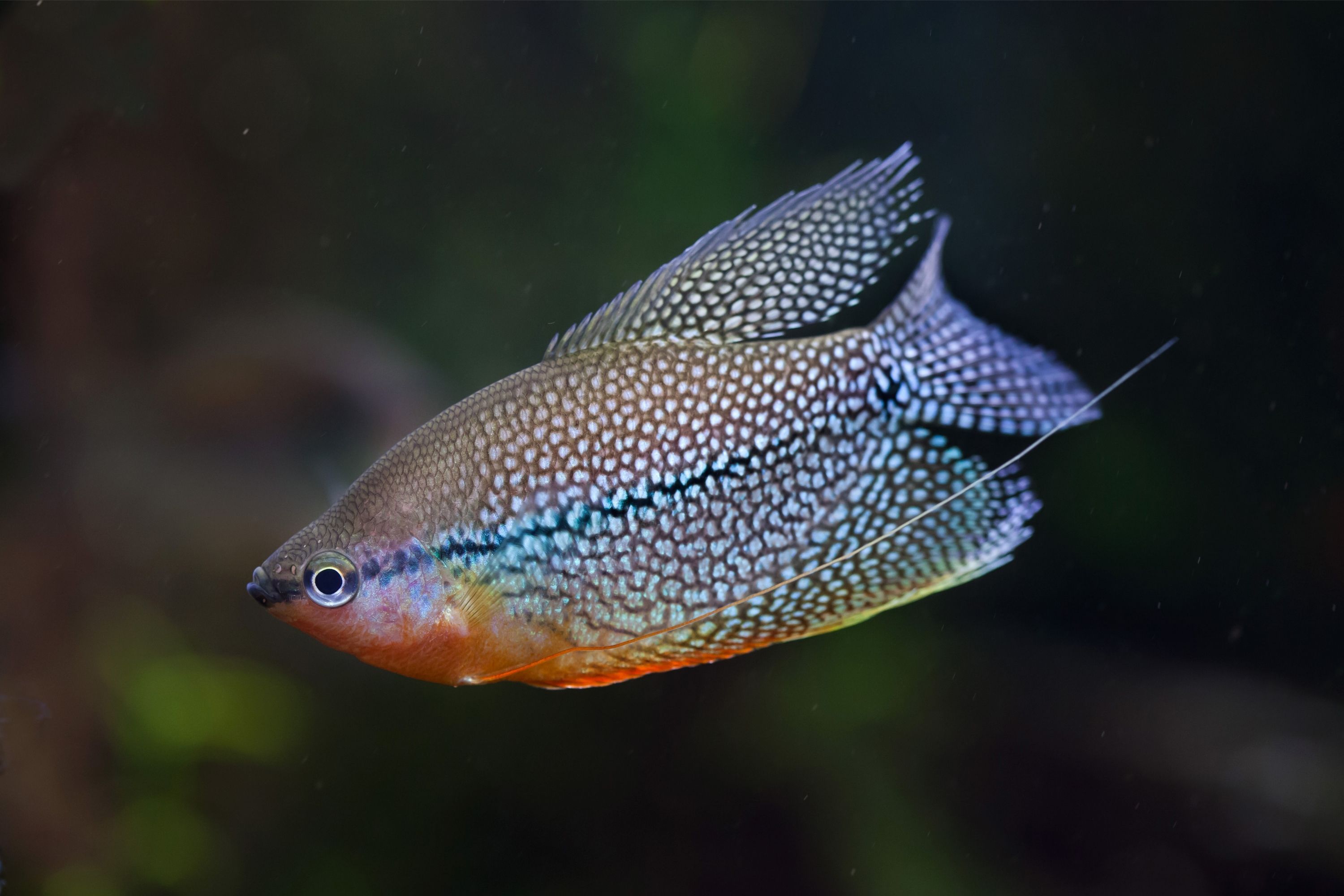Pearl gourami
(Trichopodus leerii)

Description
The pearl gourami (Trichopodus leerii) is a species of gourami native to Southeast Asia. These fish reach about 12 centimetres (4.7 in) TL. The body is a brownish-silver colour, covered in a pearl-like pattern with a distinct black line running from the fish's head, and gradually thinning towards the caudal fin. This fish's appearance has given rise to many popular names, such as the lace gourami and the mosaic gourami. Male specimens of this fish, typical of many gouramis, are generally larger and more colourful than their female counterparts. They exhibit bright orange colouring around the throat region, which at breeding time becomes much brighter and is used to court the female. Males also exhibit somewhat of an orange tinge in their fins, with the exception of the caudal (tail) fin. The male also has longer fins, with a more pointed dorsal fin and extended anal fin rays. The pearl gourami is native to Thailand, Malaysia and Indonesia (where it is found on the islands of Sumatra, and Borneo). It occurs in lowland swamps with acidic water.This fish prefers the top and middle levels of the water. Trichopodus leerii was formally described as Trichopus leerii by the Dutch medical doctor and ichthyologist Pieter Bleeker in 1852. The type was collected at Palembang in Sumatra by Lieutenant-Colonel J. M. van Leer who was a medical colleague of Bleeker's and whom Bleeker honoured in its specific name. A tank with a volume of 120 litres (30 gallons) or over is generally recommended for a pair of pearl gouramis, although anything above that volume is greatly recommended, since these fish may show signs of stress, abnormal aggression, and illness when confined. Preferred tank temperatures are 22–28°C (72–82F).Tanks with surfaces exposed to fresh, humid air are needed so that the pearl gourami's labyrinth organ can function correctly. As with any tropical aquarium, adequate filtration, lighting, substrate and decorations, plants, and other parts of proper care are required. This fish may be somewhat timid or shy, and should not be kept with fish that are too boisterous or aggressive. In fact, in the first several days or weeks, these fish typically show extreme shyness and timidness, spending a great deal of time hiding, regardless of tank-mates or water properties.
Taxonomic tree:







